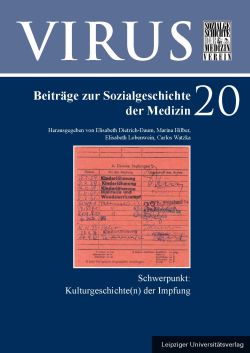
VIRUS Band 20, pp. 055-078, 2022/06/14
Schwerpunkt: Kulturgeschichte(n) der Impfung

Over the long 18th century, the Viennese press showed a broad content-related and functional diversification. In this framework, the preventive fight against smallpox left various imprints. Besides newspaper reports, it was possible to include the communication of administrative and legislative steps, reasoning and instructive texts as well as commercial advertisements concerning inoculation and vaccination. The survey focusses on the official Wienerisches Diarium (founded in 1703, renamed Wiener Zeitung in 1780), additions come from the commercial press of the 1760s and 1780s. This wealth of information results in a many-faceted picture of the areas of theoretical knowledge or practice which influenced the public debate on both methods of immunisation and a spectre of reactions reaching from rejection on the one hand towards propaganda on the other. Not only medical theory and practice, driven by philanthropist enlightened attitude and commercial endeavour, and medical police, but also (pastoral) theology, (moral) philosophy and factual as well as emotional perceptions of non-professionals are medially reflected. In this many-voiced discourse, newspapers emerge as multi-functional channels of an integrative up-to-date public exchange which consequently brought financial gains and esteem for publishers and editors.
Keywords: Smallpox, Inoculation, Vaccination, Newspapers, Medical Police, Habsburg Monarchy, Enlightenment